Orchestration Layer
Outline
Configurations in the Orchestration Layer are managed using the TrustX Backoffice application. Users will be able to configure various aspects of their ID&V process such as Process Definitions, Cloud Functions, Themes, and more. This document provides an overview of the available features in TrustX currently available in the Backoffice.
Custom Language
When using the Backoffice, a custom language can be defined per tenant. To set a custom language, contact Daon Support. A JSON language file for the specified language will be provided where the file may modified. Once complete, the modified JSON file will be returned to Daon Support for configuration in the Backoffice.
Dashboard

Backoffice Dashboard
The dashboard lists Process Definitions with the most recent Process Instance activity. The will display a list of Process Instances started over the last 7 days.
From the Dashboard, a customer wishing to create a Process Definition can navigate to the Process Definitions tab and create their own.
A Process Definition provides the capability to use the modeling tool to create a new identity verification flow or edit an existing one. The process is designed to make it easy for a customer to change the components within the verification journey to adapt to their specific needs. For more information, see the Process Definition Guide.
Customers may wish to try specific verification methods or experiment with the order they are presented to the end user. Country or state-level regulations may dictate determined journeys for verification or authentication. The Process Definition allows for all of these and gives customers complete flexibility over their flows while making it easy to change them as required.
Process Instances
The Process Instance page offers an overview of all Process Definitions and their last run instances. An individual Process Definition can be selected from this page to offer an in-depth look at details about the Process Definition, a timeline of recent activity, a report summary of recent checks, and any associated documents.
Simply put, it is an overview of all existing processes at a macro level, with the ability to view the detail of a single process at a micro level (one end-user).
To access the Process Instances click the “Process instances” on the navigation bar.
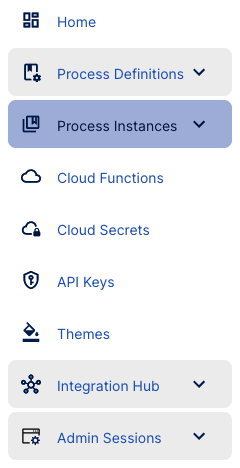
For more information on viewing Process Instances, see the Process Instances Guide page.
For Review
Process Instances may enter a 'review' status in cases where a check fails during the ID&V process. Process Instances that reach this status can be viewed and managed from the 'For Review' page, which is located within the Process Instances section of the Backoffice.

For more information, see the For Review Guide.
Process Definitions
A Process Definition determines the authentication or onboarding flow that your users will carry out to onboard and verify with your application. For example, the flow can be updated to include Document Capture and Face Capture.
To access the Process Definitions page, click the "Process Definitions" tab on the navigation bar.
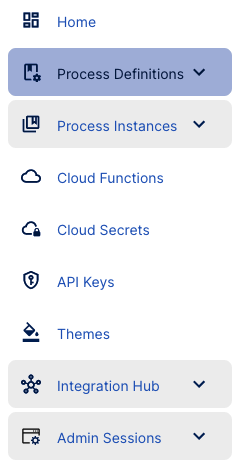
For more information, see the Process Definition Guide.
Process Tokens
A Process Token is used to integrate the user application with the ID&V flow outlined in the Process Definition.
For a full list of Process Tokens created by the user, click the "Process Tokens" tab on the navigation bar.
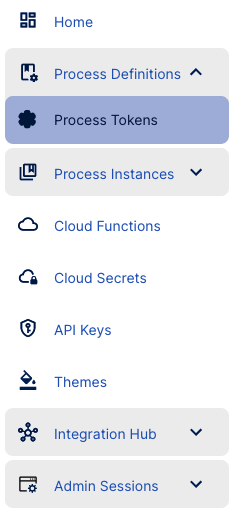
For more information, see the Process Definition Tokens Guide.
Cloud Functions
A Cloud Function is a method to invoke a custom function written in Python, by the customer (tenant) and invoked from a business process.
This will allow a customer to be able to extend the business process and perform a number of functions which will not be available from within the platform. One such example of this is the ability to execute an external data check.
The page is accessible via the "Cloud Functions" tab on the navigation bar.
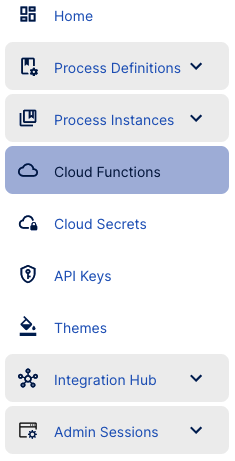
For more information, see the Cloud Functions Guide.
API Keys
API Keys allow users to create applications that integrate with the TrustX app. From the API Keys page, users can create a new API Key, update their API keys, see a list of all API keys and issue a token.
The page is accessible from the "API Keys" tab on the navigation bar.
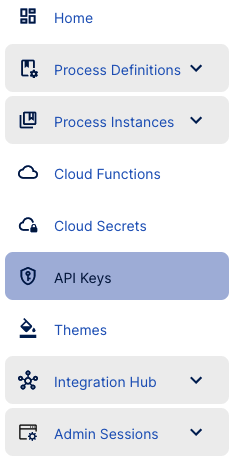
See the API Keys Guide for more information.
Webhooks
Webhooks offer users end to end oversight of the ID&V process with TrustX. Callbacks and webhooks provide visibility of the status of an end user session, and return the end user back to a given registration flow on completion of the ID&V process with TrustX.
Webhooks are managed from the "Webhooks" tab on the navigation bar.
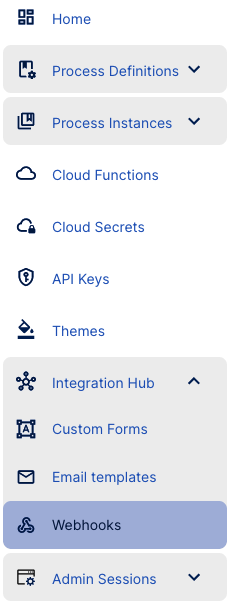
See the Webhooks Guide for more information.
Admin Sessions
The Admin Sessions page allows users to review recent OpenID Connect (OIDC) session activity that are created when authenticating administrators. Users will be able to view login and session activity, including operations performed during the admin user's session.
Admin Sessions can be viewed from the "Admin Sessions" tab found on the navigation bar.
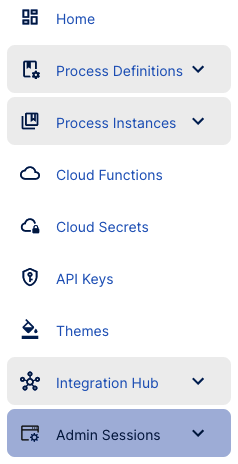
For more information, see the Admin Sessions Guide.
Themes
Themes allow users to define themes that users can customise to match their branding guidelines. Colors and logos can be configured to update the TrustX application and applied to a Process Definition to configured the ID&V flow.
Themes can be configured from the 'Themes' tab found on the navigation bar.
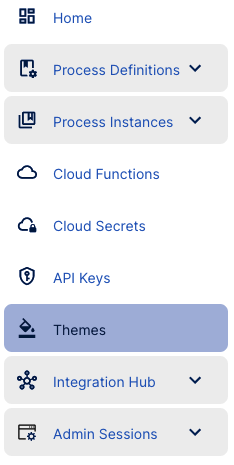
For more information, see the Themes Guide.
Custom Forms
Custom Forms allow users to create a form with custom fields that can be introduced to the ID&V flow using the Process Designer. This enables users to further customize their ID&V flow.
Forms can be created from the 'Custom Forms' tab found on the navigation bar.
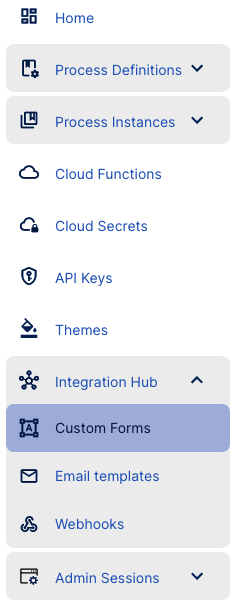
For more information, see the Custom Data Forms guide.
Email Templates
Email Templates allow users to define emails that can be sent from a Process Definition using the Send Email activity. Email Templates are highly customizable and provide in HTML format for designing and creating the content of an email. Additionally, session date can be used to personalize the email by including variables in the email body.
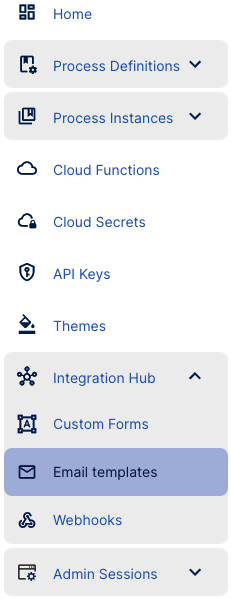
For more information, see the Email Templates Guide.
Watchlists
Watchlists provide the ability to create and manage lists of persons of interest. End-users completing an ID&V flow can be matched against a defined watchlist where certain actions can be taken depending on the result of the search.
To access the 'Watchlists' page, find the tab from the left-side navigation bar.
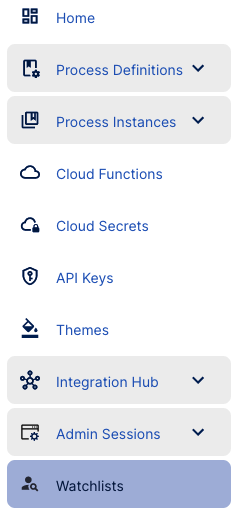
For more information, see the Managing Watchlists guide.
OIDC Clients
OIDC Clients provide a secure method of verifying an end-user's identity at the beginning of the ID&V process.
To access the 'OIDC Clients' page, find the 'OIDC' tab from the left-side navigation bar.

For more information, see the OIDC Integration guide.